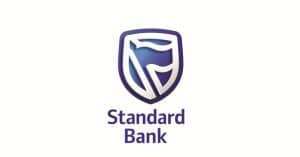As parents or guardians, ensuring the financial security of our children is a top priority. In South Africa, there are various savings plans designed to help you build a solid financial foundation for your child’s future.
However, with so many options available, it can be overwhelming to choose the best one. In this blog post, we will explore the top savings plans that can help you make informed decisions, ensuring a stable future for your children while teaching them financial discipline.
Saving for your child’s future goes beyond simply putting money aside. It involves strategically planning for their needs and aspirations. Whether it’s for education, buying their first car, or preparing for their first home, selecting the right savings plan is essential.
These plans are not just financial tools; they are pathways to opportunities and success. Let’s dive into the savings options that can be part of your broader financial strategy, empowering your child for a bright future.
Understanding South African savings landscape for minors

The savings options for minors in South Africa combine traditional banking and investment products, each offering unique benefits for long-term financial growth. Traditional savings accounts are secure, low-risk, and backed by stable banks, making them a simple choice for accumulating funds over time, though they offer modest interest rates. Digital banking has made these accounts more versatile, helping children learn financial literacy through practical experience.
On the other hand, investment products like tax-free savings accounts (TFSAs) and stocks provide higher growth potential. While they come with more risk, they offer valuable lessons in market dynamics and financial planning, teaching kids about wealth accumulation and investment strategies from an early age.
Savings accounts tailored for young savers
Several South African banks offer savings accounts tailored for young savers, with features like low minimum balances, competitive interest rates, and minimal or no service fees. These accounts often come with educational resources to help children understand the importance of saving. Mobile apps allow kids to track their savings in an engaging way.
These accounts not only promote regular saving habits but also teach patience and financial discipline. With minimal risks, they are ideal for starting a child’s financial journey. Many banks also offer incentives like annual bonuses to encourage consistent saving, helping children develop a strong foundation for future financial independence.
Investment options and TFSAs for teens
As teens near adulthood, guardians may consider introducing them to financial products like investments and tax-free savings accounts (TFSAs). TFSAs in South Africa allow for a diversified approach, with opportunities to invest in stocks, unit trusts, or cash, all while benefiting from tax-free growth.
Involving teens in the investment process teaches them about market fluctuations, risks, and potential returns. This can demystify finance, fostering a proactive attitude and informed decision-making skills. It also nurtures skills like analytical thinking and risk assessment, helping them understand global economics.
Early engagement with investments equips teens with the confidence and knowledge to make informed financial decisions as they transition into adulthood. TFSAs and other investment strategies can provide both educational value and long-term financial benefits.
Choosing the right plan for your child’s future
Choosing the right savings plan for your child requires understanding their goals, personality, and financial education needs. Align the plan with their unique qualities and your family’s financial objectives, considering factors like investment horizon and risk comfort.
For children interested in entrepreneurship, an early introduction to investments might be suitable, while a traditional savings account could work better for more cautious kids. Family discussions about money and goals can help ensure the plan fits both your child’s aspirations and family values.
The aim is to teach responsibility and sound financial decision-making, adapting the plan as your child’s needs evolve. This ensures long-term value and future financial success.
Educational components and financial literacy
Savings plans for minors play a key role in fostering financial literacy. Many plans include educational tools like apps and gamified tasks that engage children in learning about budgeting, interest, and saving for goals. These resources make financial concepts fun and relatable, helping young people develop crucial skills for managing money.
Involving children in family financial decisions further enhances their understanding, promoting curiosity and practical learning. Over time, these lessons shape their financial habits and prepare them for responsible money management.
Balancing risk and reward
Choosing the right savings plan involves balancing risk and reward. Traditional savings accounts are low-risk but offer lower returns, while investment accounts have higher risks and potential rewards. Understanding this balance is key to aligning the plan with your child’s needs.
Discussing risk and reward with children also teaches them valuable financial decision-making skills, preparing them for the future. A diversified approach, combining safe and riskier options, offers both stability and growth, setting the foundation for long-term financial success.



